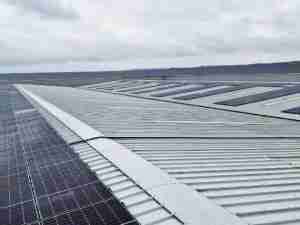Prices paid to U.S. producers rose in September at the slowest pace of the year amid cooling costs of services including airfares as the delta variant impacted demand.
The producer price index for final demand increased 0.5% from the prior month and 8.6% from a year earlier, Labor Department data showed Thursday. Excluding volatile food and energy components, the so-called core PPI rose 0.2%, the smallest advance this year, and was up 6.8% from a year ago.
The median forecasts in a Bloomberg survey of economists called for a 0.6% month-over-month advance in the overall PPI and an 8.7% gain in the core figure. Stock futures and Treasury yields were little changed after the report.
The cost of services rose just 0.2%, the smallest gain in three months, partly reflecting an almost 17% drop in prices for airline passenger services, the PPI report showed. Including cheaper car rental prices, the data highlight inflationary cross-currents as the spread of the coronavirus impacted activities like travel. At the same time, goods prices kept rising at a steady pace.
Prices paid to producers for goods increased 1.3%, the most in four months. Forty percent of the advance in goods was attributed to energy, the Labor Department said.
Supply Chain
The PPI has climbed steadily this year as interruptions in supply networks and constraints that include shortages of materials and labor, drive up production costs. Firms have passed along at least some of those costs to their customers, which explains a recent acceleration in consumer prices.
A report Wednesday showed prices paid by consumers rose in September by more than forecast, posting the largest annual gain since 2008. The data also showed a sharp drop in airline fares.
Countries around the world are experiencing higher inflation. In China, the world’s largest exporter, a gauge prices paid to factories rose last month by the most since 1975.
Recent U.S. inflation data reinforce the Federal Reserve’s plan to soon start pulling back monetary support, especially as bottlenecks show little signs of abating. Minutes from last month’s Fed policy meeting showed that officials assessed that if the economic recovery remains on track, “a gradual tapering process that concluded around the middle of next year would likely be appropriate.”
Within goods, energy prices rose 2.8%, the most since March. Food prices climbed another 2% after a 2.9% increase a month earlier.
Producer prices excluding food, energy, and trade services—a measure often preferred by economists because it strips out the most volatile components—edged up 0.1% from the prior month, the smallest gain since May 2020. Compared with a year earlier, the metric rose 5.9%.
Costs of processed goods for intermediate demand, which reflect prices earlier in the production pipeline, increased 1.3% in September.


_-_28de80_-_8f8c6366d00d2f1fde1eee7fbc1f9ce9fbad4504_yes.png)







